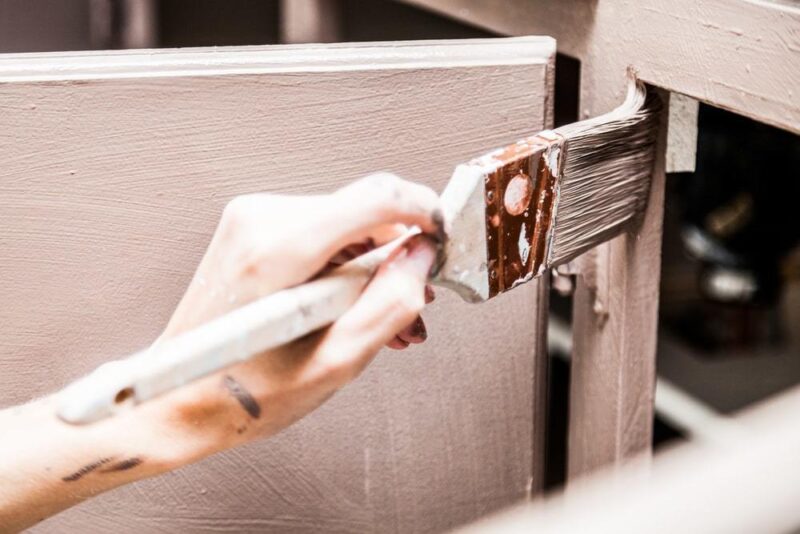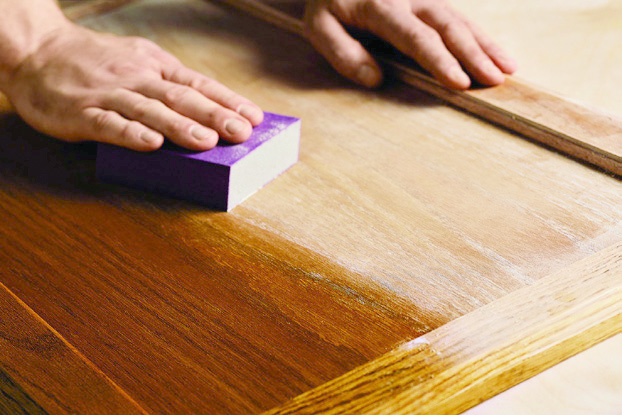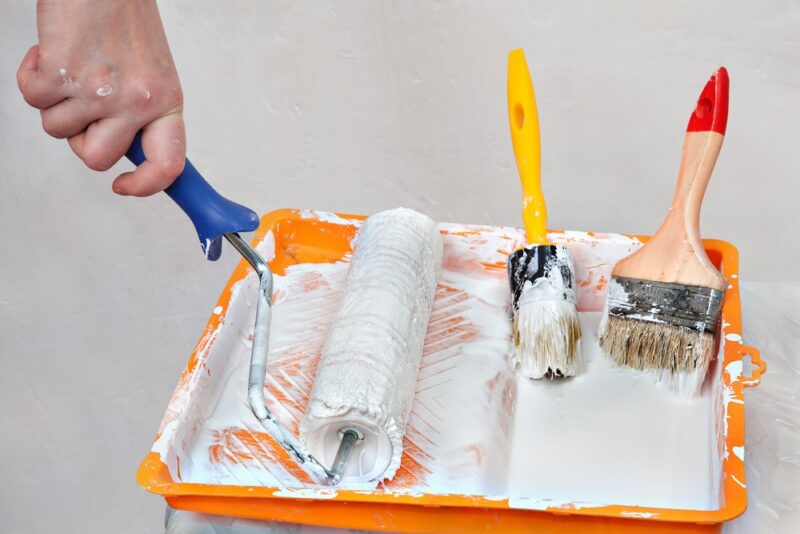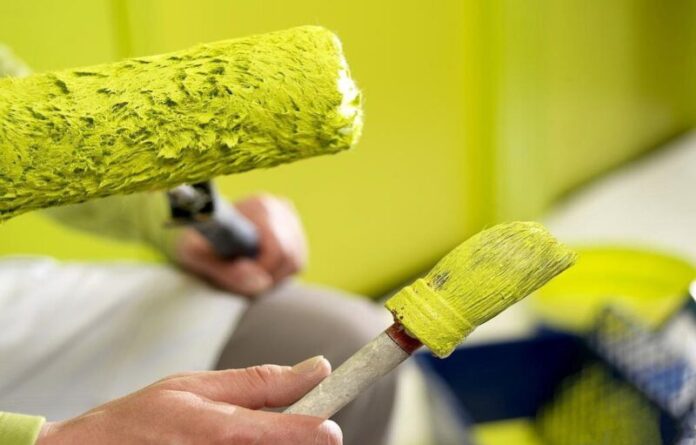Painting kitchen cabinets can be a fun and rewarding project, but it’s important to weigh the pros and cons of each option before making a decision. In this article, we’ll explore the benefits and drawbacks of painting with a roller vs. a brush to help you choose the best approach for your own kitchen.
Advantages of Painting Kitchen Cabinets with a Roller
A roller is often considered the easier option when it comes to painting kitchen cabinets. This is because a roller is less sensitive to drips and runs than a brush, making it more forgiving when it comes to mistakes. Roller paint also tends to be more durable than brush paint, meaning that there is less of a chance of the cabinet finish coming off.
Disadvantages of Painting Kitchen Cabinets with a Roller

When painting kitchen cabinets with a roller, there are a few disadvantages to be aware of.
One disadvantage is that a roller can create more dust and debris than a brush, which can lead to more cleanup later on. Additionally, because a roller is not as efficient at covering the surface as a brush, it may require several coats of paint to achieve the same level of coverage.
Another disadvantage of painting kitchen cabinets with a roller is that it can be more difficult to control the application of paint. This is due in part to the fact that a roller cannot accommodate for gradual changes in direction; instead, it must be pushed in one straight line.
Advantages of Painting Kitchen Cabinets with a Brush

Painting kitchen cabinets with a brush has several advantages:
– Brushes are easier to control than a roller, which makes them better for detailed work.
– A brush can evenly distribute paint over the entire surface of the cabinet, which is crucial for a smooth finish.
– Brushes are less likely to leave brush strokes or streaks on the cabinet.
– Paint can be applied more quickly with a brush than with a roller, which can speed up the process of painting your kitchen cabinets.
Disadvantages of Painting Kitchen Cabinets with a Brush
When it comes to painting kitchen cabinets with a brush, there are a few disadvantages to be aware of.
– First, the brushes used for this type of painting are typically made from natural materials like hog or horse hair, which can cause scratches on the surface of the cabinet.
– Second, because a brush is used instead of a roller, the paint will not cover as evenly and will require more attention during the painting process.
– Next, when using a brush, it is important to keep a close eye on the surface you are painting so that you do not apply too much paint and end up with unevenly applied colors.
– Also, because a brush is less effective than a roller in terms of covering a large area quickly, it is often necessary to take more care in creating details on the cabinet surface.
– Finally, because brushes tend to fray over time and get clogged with paint particles, they need to be cleaned frequently in order to keep them working optimally.
Which Type of Paint to Use?

When it comes to cabinet restoration, there are a few things to consider: the type of paint, the roller or brush, and the surface. Cabinet painting service providers typically have a wide range of paint types and rollers to choose from, so it’s important to select the right one for the job.
Here is a look at each option and its advantages and disadvantages.
– Paint types. There are two main types of paint: latex and oil. Latex paints are water-based and can be applied with a brush or a sprayer. They are good for surfaces that will absorb moisture, like wood or tile. Oil paints are made of solvents and are not water-based. They can be applied with a brush or a roller, but must be mixed with turpentine before use to protect the wood from drying out.
– Roller vs brush painting. There is no right or wrong answer when it comes to painting kitchen cabinets – it all comes down to personal preferences. If you’re new to painting, start with a brush – it’s easier to control and less messy than a roller. If you’re more experienced, try using a roller – it’s faster and more efficient, leaving less paint residue on the surface.
– Surface type. When choosing which type of paint to use, you also have to consider the surface on which you’re painting. Paint will not adhere to wet or drywall, so you will have to use a different type of paint for that. Latex paint is the best option for wood surfaces, because it dries quickly and can be easily painted over. Oil paint is good for tiles and other porous surfaces, because it takes longer to dry and leaves a more durable finish.
How Often to Paint Kitchen Cabinets?
It is generally recommended that homeowners paint their kitchen cabinets every two to four years.
Paint can often wear off the cabinets over time, and thus it is important to paint them regularly to keep them looking new.
How to Remove Old Paint from Kitchen Cabinets?

There are a few ways to remove old paint from kitchen cabinets. You can use a household cleaner, a degreaser, or a scrubber. Be sure to use caution and wear protective gear when removing the paint.
– If you want to use a cleaner, mix 1 cup of white vinegar with 1 gallon of water and pour the solution into a spray bottle. Soak a cloth in the solution and scrub the paint off the cabinet.
– If you want to use a degreaser, mix 1 gallon of mineral oil with 3 cups of white vinegar and pour the solution into a spray bottle. Soak a cloth in the solution and scrub the paint off the cabinet.
– If you want to use a scrubber, wet it with water and add 1 teaspoon of dishwashing detergent. Scrub the paint off the cabinet.
How to Clean and Sanitize Your Painting Equipment?

- Remove any dust or debris with a cloth or a vacuum cleaner.
- Pour 1 cup of white vinegar into a large container and add 1 tablespoon of washing soda.
- Swish the vinegar and washing soda around in the container until the contents are completely mixed together.
- Put the painting equipment in the solution and let it soak for about 20 minutes.
- Rinse the painting equipment with fresh water and dry it off with a cloth.
Conclusion
In this article, we have discussed the pros and cons of painting kitchen cabinets with either a roller or brush. At the end of the day, it really comes down to personal preference; whichever method you choose will produce similar results. The main advantage to using a roller is that it can cover a larger area more quickly; however, brushing gives a more detailed finish. As with most things in life, there are pros and cons to both options – so which one should you use for your next painting project? It all depends on what you are looking for!




